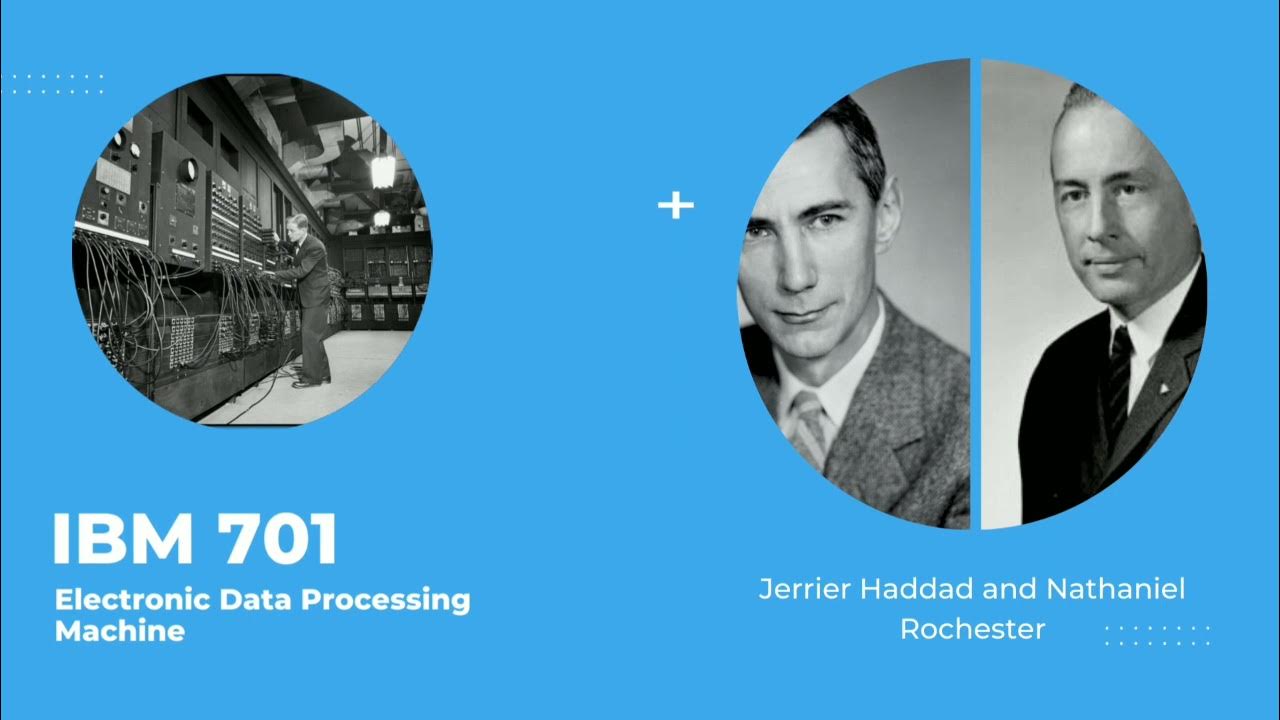Evolusi Sistem Operasi-MS DOS-Windows-Android
Summary
TLDRThis lecture explores the evolution of operating systems, tracing their development from the 1940s to the modern era. It begins with the historical context of the first four generations of systems, focusing on MS-DOS, Windows, and Android. Key milestones include the creation of MS-DOS in 1981, the launch of Windows 1.0 in 1985, and the introduction of Android OS. The discussion highlights technological advancements in memory management, user interfaces, and multi-tasking capabilities, showcasing how these systems have evolved to meet the demands of users and businesses alike.
Takeaways
- 😀 The history of operating systems is divided into four generations: 1945-1955 (Gen 1), 1955-1965 (Gen 2), 1965-1980 (Gen 3), and 1980-1981 (Gen 4).
- 😀 Operating systems have evolved gradually, with changes in both appearance and functionality over time.
- 😀 MS-DOS was a key milestone in the evolution of operating systems, first emerging with the release of Altair 8800 in 1975.
- 😀 Microsoft bought 86-DOS in 1981, which became the foundation for MS-DOS version 1.0.
- 😀 MS-DOS initially used assembly language and was compatible with CP/M, with batch files as a primitive feature.
- 😀 MS-DOS 5.0, released in 1991, improved memory handling and included extended memory support for better program management.
- 😀 Windows 1.0, released in 1985, struggled to gain popularity initially due to its basic design and functionality.
- 😀 Windows 2.0, released in 1987, improved on Windows 1.0, utilizing a 16-bit architecture.
- 😀 Windows 95 was a breakthrough version, introducing support for internet protocols and enhancing the user interface.
- 😀 Windows 10, launched in 2015, brought significant performance and feature improvements, solidifying its position as one of the most widely used operating systems.
- 😀 Android operating system began in 2008, with Android 8.0 Oreo bringing key updates like better battery management, data-saving features, and improved security.
Q & A
What is the main focus of the lecture in the transcript?
-The main focus of the lecture is on the evolution of operating systems, specifically MS-DOS, Windows, and Android, and their historical development.
How is the history of operating systems divided in the lecture?
-The history of operating systems is divided into four generations: the first generation (1945-1955), second generation (1955-1965), third generation (1965-1980), and fourth generation (1980-1981).
What is MS-DOS, and how did it evolve according to the script?
-MS-DOS (Microsoft Disk Operating System) was developed by Microsoft after acquiring 86-DOS from Seattle Computer Products in 1981. It started with 4,000 lines of assembly code and evolved over time to support features like extended memory, batch files, and disk management.
What were the key features of MS-DOS version 1.0?
-MS-DOS 1.0 had features such as basic disk management, file handling, and the command processor. It was compatible with CPM and allowed basic file operations and batch scripting.
What was the significance of Windows 1.0 in the evolution of operating systems?
-Windows 1.0, released in 1985, was the first graphical user interface operating system by Microsoft, running on top of MS-DOS. It marked the beginning of Windows as an operating system.
How did Windows 95 improve upon previous versions?
-Windows 95 introduced the Start Menu, TCP/IP networking support, and enhanced graphical user interface elements, making it a major upgrade from earlier Windows versions.
What was the impact of Windows 10 on the development of operating systems?
-Windows 10, released in 2015, was the latest version at the time and introduced improved performance, security, and integration with modern hardware, enhancing user experience significantly.
What is the significance of Android in the context of operating system evolution?
-Android, starting with version Alpha in 2008, rapidly evolved into a dominant mobile operating system, with features like battery-saving options, enhanced security, and better multitasking. By version 8.0 Oreo, it had become a highly reliable OS for mobile devices.
What were the features introduced in Android 8.0 Oreo?
-Android 8.0 Oreo introduced background limitations to save battery, notification channels, picture-in-picture mode for multitasking, and improved security features.
How does the lecture suggest students engage with the topic of operating system evolution?
-The lecturer encourages students to participate in a discussion to reflect on and compare the evolution of MS-DOS, Windows, and Android, helping them deepen their understanding of operating system development.
Outlines

This section is available to paid users only. Please upgrade to access this part.
Upgrade NowMindmap

This section is available to paid users only. Please upgrade to access this part.
Upgrade NowKeywords

This section is available to paid users only. Please upgrade to access this part.
Upgrade NowHighlights

This section is available to paid users only. Please upgrade to access this part.
Upgrade NowTranscripts

This section is available to paid users only. Please upgrade to access this part.
Upgrade Now5.0 / 5 (0 votes)





